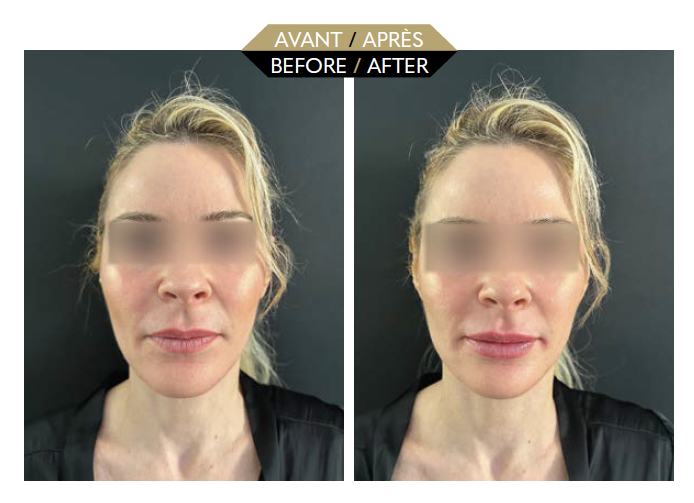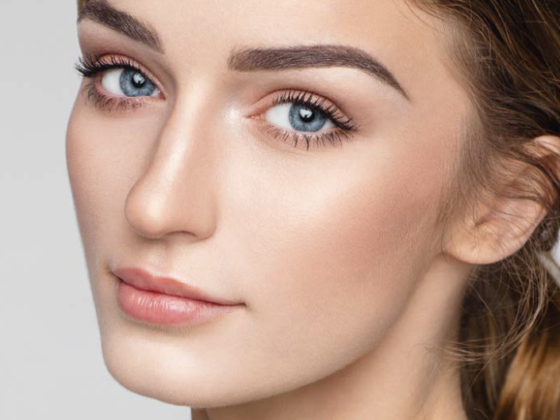Dr Massimo Gianfermi
An elegant and harmonious mouth is the goal of “naturalist” aesthetics doctors and surgeons in the face of the tidal wave of “Instagram Lips”.
Fads come and go, but harmony is made to last

I have never extolled the same beauty standards as Instagram – i.e. a voluminous and everted, rounded mouth with equal proportions or a larger top lip than bottom lip – because it does not match what nature gives us. A new trend, the Baby Doll mouth – with less outlined lips, extreme volumes and blurred contours – has relegated the subtilities of the mouth’s curves to give a pouty appearance to this area, which is pivotal to the harmony of the face.
As a fervent defender of the natural look, I cannot get on board with this type of look for the lips. My patients, on the whole, favour the “less is more” approach, so I base my work around their anatomy, the existing shapes and the patient’s wishes, sometimes carrying out the work in several stages to mould the tissues with small, consecutive corrections, if necessary. For me, the secret to a successful procedure is respecting the harmony of the face and the peri-oral region and selecting a filler with suitable rheological properties. A study published in 2017 by the Jama Facial Plastic Surgery showed that the most popular proportions were approximately 1:1.5, with the top lip slightly less voluminous than the bottom lip. These proportions can be adapted to suit mature women, on whom overly-fleshy lips look out of sync in relation to the rest of the face.
This is why my guidelines have never changed: respect the anatomy of the lips, the harmony of the face and the patient’s age. I work with the most suitable products for this highly mobile area, which is why the product’s rheology is so important because a too-cohesive HA hardens the lips, causing them to lose some of their expressiveness. The classic photo of an “Instagram mouth” on a young woman can look pretty when the face is at rest, but often the lips look deformed when the person smiles or speaks. This is why I am very careful with both the quantities and the functional qualities of the products I use.
A highly mobile and dynamic area
The specifications for a successful result are complex and no two treatments are the same. The lips need a product that copes well with movement and is not resorbed too quickly. On atrophic lips that have lost their tonicity, we need a supple HA that stays in its original conformation when the lips are in movement, because if the HA is too fluid, the product can migrate into the upper lip or amass underneath the mucous membrane. This is why my two chosen fillers, which fulfil all of my requirements, are MaiLi Precise to redefine the contour and Define to plump and enhance the volumes. I always start by outlining the contour, and sometimes the philtrum and Cupid’s bow. I have noticed, as have my patients, that it lasts well over time, as the majority of them are still satisfied with the results after a year. If they ask for more discreet volume, I use Precise, which is moderately volumising and boosts hydration while smoothing the fleshy part of the lip. Define, meanwhile, is generally used for younger patients who seek more volume. Since it is more volumising and cohesive than Precise, I achieve natural-looking results coupled with light projection and visible volume. It fulfils the demand for fleshy lips while respecting the lips’ movement. Depending on the size of the mouth and the request, I inject between 0.5ml and one 1ml syringe. For a larger mouth, I use a syringe of Define to restore the volumes and restructure the lips, and one of Precise to reshape the contour, though rarely in full. I like to work on the vermillion lip using a needle because I can make the lips project less and evert more, making the procedure more precise. It is important to inject small volumes each time, to avoid the extrinsic compression of the blood vessels. When injected at an oblique angle into the middle third of the upper lip, the HA will gently evert it. In the lower lip, I focus on the two fleshiest parts on either side of the central line.
To smooth barcode wrinkles on the upper lip, I practise the cross-link technique with Precise and a 30g needle. I position it parallel to the skin’s surface and perpendicular to the wrinkles, and I insert the needle into the superficial dermis. The needle should be visible under the skin. I make a retro-tracing line every 2-3 millimetres, which uses around 0.2cc per hemi-lip. It takes a minimum of 20 lines to treat the whole lip. On deeper wrinkles, I use the blanching technique, this time parallel to the wrinkle. In the monthly check-up, I notice that the results are even better than just after the procedure. This is a delicate and tricky procedure that I really enjoy doing.
My patients tend to feel good in their own skin and are knowledgeable. Most are women aged between 30 and 50, plus a few men who want a discreet increase in volume without any visible roundness, often as part of lower face contouring. My female patients seek aesthetically-pleasing and harmonious results, both for beautification and rejuvenation, rather than wanting to alter their features. The MaiLi range fulfils both their wishes and my demands.
Dr Massimo Gianfermi

Qualified in plastic and reconstructive surgery, University of Picardy Jules Verne. Qualified in general surgery, doctorate in medicine. Creator and head of the plastic, reconstructive and aesthetic surgery department at Beauvais hospital. Aesthetic dermatology specialist and teacher at Amiens hospital. Plastic surgeon of the face and body, aesthetics doctor in Levallois-Perret and Paris.
More informations: docteurgianfermi.fr















